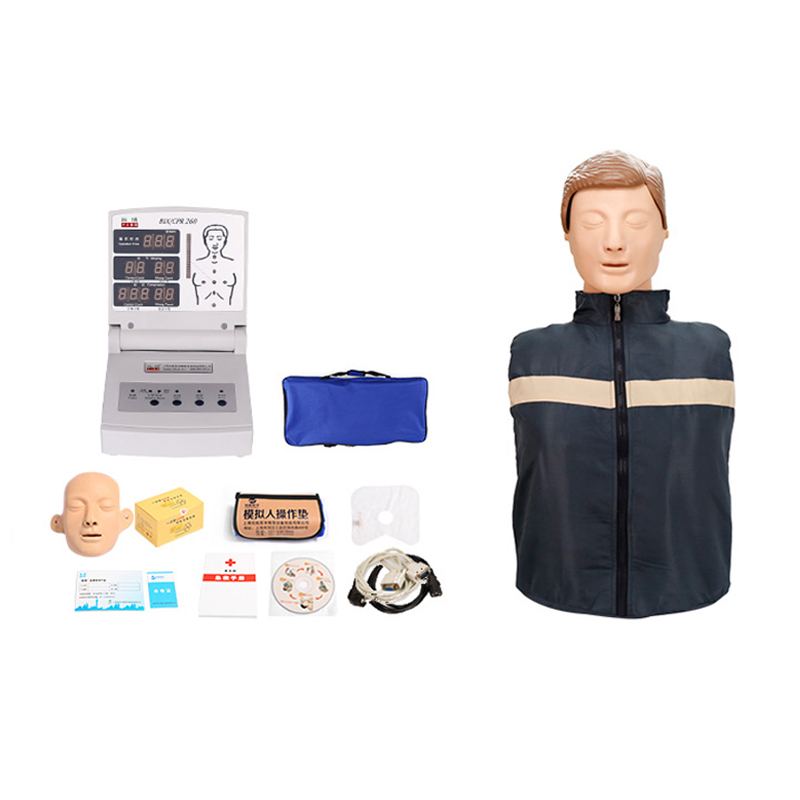

Article tag: Half body CPR model| Medical first aid model|
Half body pulse resuscitation model, that is, half body cardiopulmonary resuscitation model (hereinafter referred to as "model"), plays a crucial role in cardiac emergency. With the continuous progress of medical technology and the renewal of emergency concepts, th...
Half body pulse resuscitation model, that is, half body cardiopulmonary resuscitation model (hereinafter referred to as "model"), plays a crucial role in cardiac emergency. With the continuous progress of medical technology and the renewal of emergency concepts, the role of this model in cardiac emergency has undergone significant changes.

First, from simulation tools to teaching platforms
Originally, the half-body CPR model appeared primarily as a simulation tool to simulate CPR operations in emergency situations such as cardiac arrest. By simulating standard airways, artificial hand chest compressions, and artificial mouth-to-mouth breathing, medical and emergency personnel can practice repeatedly in a safe and controlled environment to improve their skills. However, with the change of education concept, this model has gradually evolved into a comprehensive teaching platform, which not only provides opportunities for simulation operation, but also combines theoretical knowledge explanation, case analysis and other diversified teaching methods to comprehensively improve students' first-aid ability and comprehensive quality.
Second, from single operation to comprehensive evaluation
With the development of first aid technology, the function of half - body cardiopulmonary resuscitation (CPR) model is increasingly rich and perfect. In addition to simulating basic cardiopulmonary resuscitation operations, the model can also feedback key indicators such as compression intensity and tidal volume through barcode indicators, digital counting and language prompts, helping students to understand their own operation effects in real time and make adjustments. In addition, some advanced models also have comprehensive assessment functions, which can comprehensively evaluate the students' first aid skills and comprehensive qualities, and provide personalized learning suggestions and guidance for students.
To sum up, the role of half-body cardiopulmonary resuscitation model in cardiac first aid has undergone profound changes. From the initial simulation tool to today's teaching platform, from a single operation to a comprehensive assessment, this change not only reflects the progress of medical technology and the update of the concept of first aid, but also highlights the indispensable role of the model in cardiac first aid.